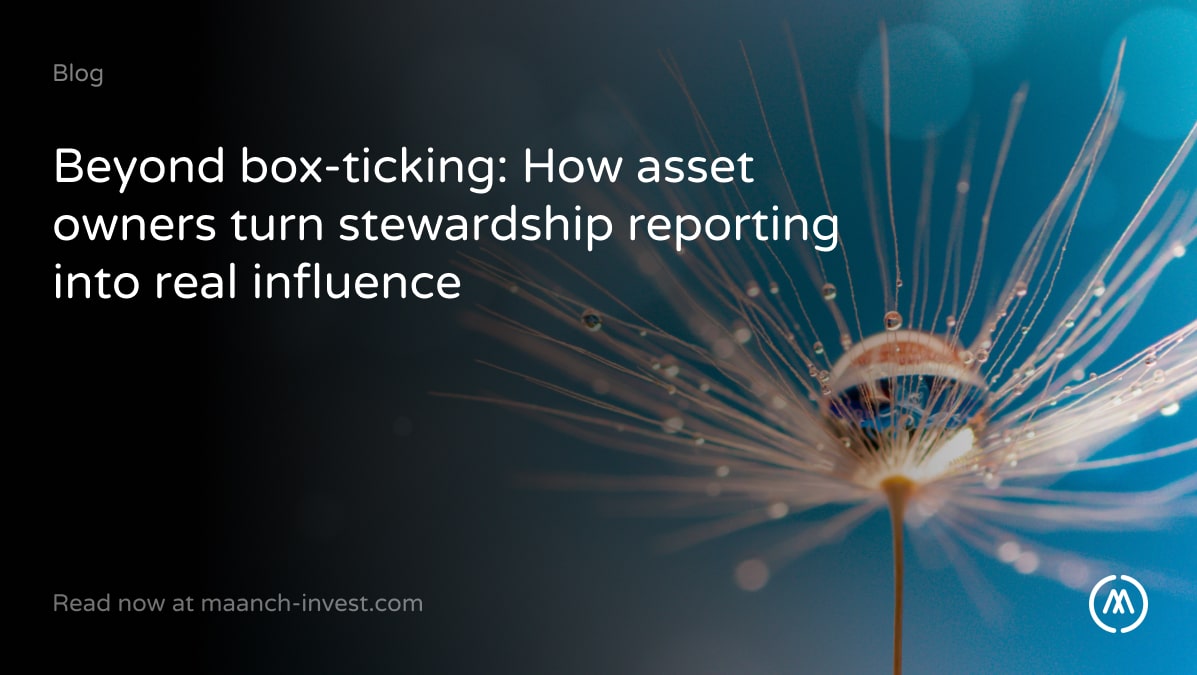Effective stewardship extends beyond mere participation in annual general meetings (AGMs) and superficial corporate governance actions. In fact, poorly executed stewardship strategies can negatively impact both companies and investors. For asset owners, adopting a holistic and proactive stewardship approach is crucial for enhancing and protecting asset value over time.
Recently, at the Stewardship Summit, our team engaged with asset owners, asset managers, and policymakers. This post distils key insights from these discussions, offering a comprehensive guide to effective stewardship for asset owners. Here, we explore strategies that not only fulfil fiduciary duties but also drive substantial long-term benefits.
Stewardship Beyond Voting
Stewardship involves a spectrum of activities, from formulating investment strategies to detailed engagement plans and voting policies. Here’s a step-by-step overview:
- Aligning Strategies and Beliefs:
Begin with integrating stewardship into the investment strategy, clearly outlining investment policies and objectives. This includes developing a consensus on trustee investment beliefs and the role of environmental, social, and governance (ESG) factors.
- Engagement and Voting:
Construct a robust engagement strategy and voting policy that reflects your stewardship goals. This should extend to setting clear expectations with service providers and holding them accountable.
- Monitoring and Evaluation:
It’s crucial to monitor how asset managers implement stewardship strategies and engage on your behalf. Assess their commitment and the effectiveness of their actions, including how they cast votes and implement engagement strategies.
- Transparent Reporting:
Ensure that outcomes of stewardship activities are measured and reported transparently, providing clear and actionable insights to all stakeholders involved.
The ICSWG has also produced “A Guide of Sustainable Investment Guides for Asset Owners” which collates a wealth of resources aimed at UK asset owners at the start of their sustainable investment journey. This document is a vital tool for understanding and navigating the complexities of ESG and sustainable investing.
The Pillars of Effective Stewardship:
Comprehensive Policy Development:
Asset owners should craft policies that detail their stewardship approach, ensuring these policies are intertwined with their overall investment strategy. This includes:
- Resource Allocation: Assess the resources available for stewardship activities and decide whether to manage these in-house or through outsourcing.
- Strategic Engagement: Determine the critical ESG issues and strategic engagement priorities, often in consultation with legal and investment advisors.
- Tools for Stewardship: Establish what tools will be utilised for engagement, such as direct investor engagement, collaborative efforts, or voting strategies.
Holding Service Providers to Account:
The Investment Consultants Sustainability Working Group’s (ICSWG) Engagement Reporting Guide underscores the importance of consistent reporting and collection of engagement data. Released in November 2021 and updated in November 2023, this guide helps asset owners utilise technological tools to standardise engagement reporting, promoting transparency and accountability.
It’s vital for asset owners to ensure that their asset managers integrate stewardship and ESG considerations effectively:
- Clear Expectations: Document and communicate your Stewardship expectations clearly in legal agreements like the Investment Management Agreement (IMA).
- Regular Reviews: Schedule regular reviews of your asset managers’ stewardship practices to ensure alignment with your objectives.
Collaborative and Individual Engagement:
Engagement should be both collaborative and individual, allowing asset owners to address systemic risks and influence corporate behaviours effectively. This includes:
- Policy Influence: Participate in policy dialogues to shape the regulatory frameworks that support robust stewardship.
- Diverse Engagement Tactics: Utilise a mix of engagement tactics, from informal discussions to more formal collaborative initiatives, tailored to specific objectives and timelines.
Enhancing Stewardship through Collaboration:
Collaborative engagement offers a powerful avenue for asset owners to maximise their stewardship impact. By partnering with other investors or stakeholders, asset owners can leverage collective efforts to address thematic issues or engage issuers for specific changes. This collaborative approach not only amplifies the impact but also optimises resource utilisation across the board. In the realm of stewardship, engaging with public policy and maintaining a rigorous legal framework are equally crucial.
The Role of Voting in Stewardship:
Voting remains a cornerstone of stewardship, serving as a direct tool for expressing approval or concerns regarding company management practices. Asset owners should leverage their voting rights to signal their stance on governance, environmental, and social issues, ensuring their actions align with long-term value creation.
Leveraging Technology for Enhanced Stewardship:
Technology plays a pivotal role in streamlining and enhancing stewardship processes for asset owners. Advanced technologies allow for more efficient monitoring, reporting, and engagement strategies, ensuring a more dynamic and responsive approach to stewardship. By adopting such technologies, asset owners can benefit from:
- Data-Driven Insights:
Sophisticated analytics tools analyse vast amounts of ESG data, enabling asset owners to make informed decisions and identify trends that could impact their investment strategies.
- Real-Time Monitoring:
Technology facilitates real-time monitoring of asset managers and investments, allowing for timely adjustments and interventions.
- Enhanced Communication:
Digital platforms can streamline communication between asset owners and their stakeholders, improving the effectiveness of engagement strategies.
Conclusion:
For asset owners, embracing a full-spectrum approach to stewardship is not just about fulfilling a regulatory requirement but about driving meaningful change and securing long-term value. By embedding comprehensive stewardship practices into every facet of their investment strategy, asset owners can ensure they meet their fiduciary duties while championing sustainability and responsibility in the broader financial ecosystem.


